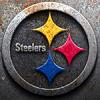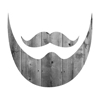The recent large glass mural thread has me wanting to experiment with doing some edge lighting. Since I have 1/8 acrylic on hand, does anyone have any tips that will make for better engravings for this? Should I be using cast or extruded, should I engrave deeper then normal, etc?
Thanks again for all the help you guys and gals freely give out on this site!





 Reply With Quote
Reply With Quote





